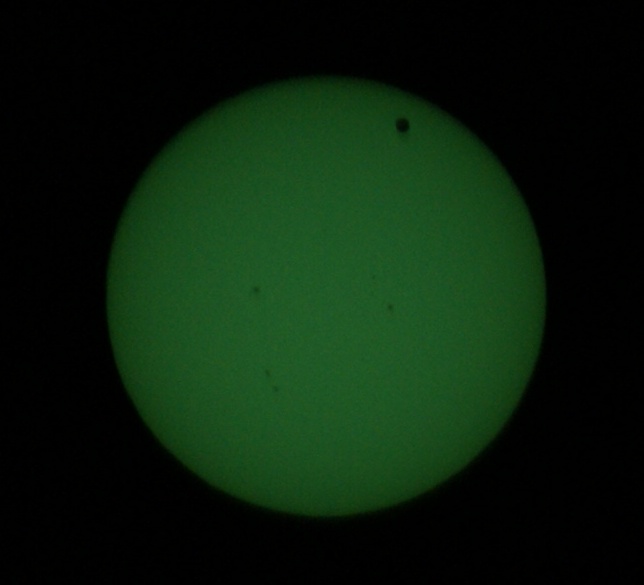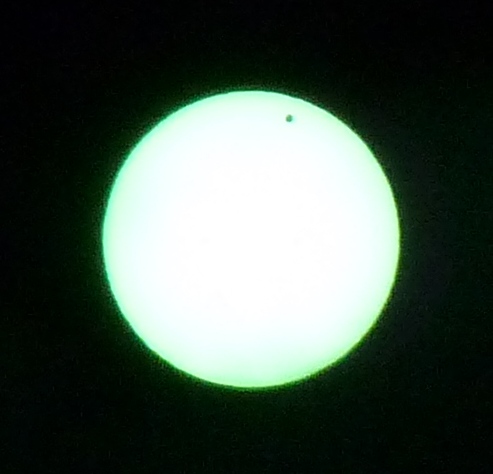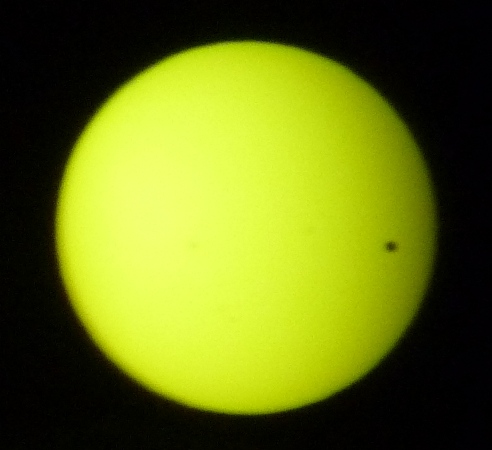June 5th, in addition to being Elizabeth’s birthday, was the date of a most-rare astronomic occurrence: a “transit” of Venus across the Sun. Every 1.6 years Venus “laps” Earth, passing between us and the Sun. This is known as an inferior conjunction. Since the two planets orbit in slightly different planes, most of the time this conjunction is out of alignment and Venus passes well above or below the Sun as seen from Earth. The orbital planes intersect at two “nodes”, and when inferior conjunction occurs at a node we see Venus pass in front of the Sun – a transit.
The last transit of Venus was in 2004, but the next will not happen until 2117. That means that most humans born in the next few years will never see it. I taped two shade-12 welding lenses to the front of my binoculars as a solar filter, and I was amazed to see not only the dot of Venus but also five sunspots. The transit lasted six hours and was still in progress as the sun set.

Sony SLR camera with 300 mm telephoto, shade 12 welding filter, 1/2500 sec, F/16. A bit dark but my sharpest photo of the sun. Five sunspots are visible.

Panasonic camera, shot through filtered binoculars. Impossible to get sharp focus. 1/2000 sec, F/6.3. 3:55 pm.

1/125 sec, F/6.3 with Panasonic camera through filtered binoculars. Close to sunset, 8:20 pm. Note how far Venus has moved.
We also stopped by campus to peer through two telescopes set up by the physics department. One had a huge magnification and the other had a hydrogen-alpha filter that showed prominences around the solar margin. Impressive, though I rather liked my binocular view.
Venus is almost as large as Earth, and it is 1/3 of the way to the Sun. If Venus and the Sun were the same distance the Sun would be three times larger relative to Venus. That is friggin’ huge!
